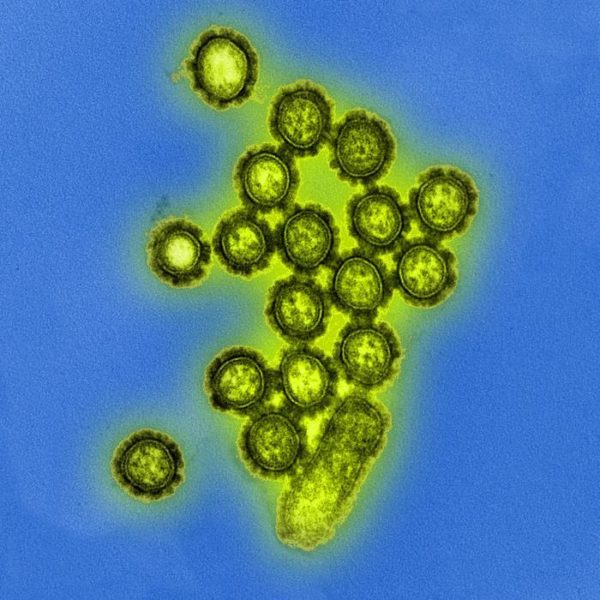About Influenza
View Sources
Sources Used in Current Review
(December 29, 2016) Centers for Disease Control and Prevention. Influenza. Available online at https://www.cdc.gov/flu/. Accessed January 2017.
(December 20, 2013) Centers for Disease Control and Prevention. Avian Influenza A (H7N9) Virus. Available online at https://www.cdc.gov/flu/avianflu/h7n9-virus.htm. Accessed January 2017.
(April 27, 2015) Centers for Disease Control and Prevention. Highly Pathogenic Asian Avian Influenza A (H5N1) Virus. Available online at https://www.cdc.gov/flu/avianflu/h5n1-virus.htm. Accessed January 2017.
(August 23, 2016) Centers for Disease Control and Prevention. Information on Swine Influenza/Variant Influenza Virus. Available online at https://www.cdc.gov/flu/swineflu/index.htm. Accessed January 2017.
(October 26, 2016) Centers for Disease Control and Prevention. Influenza Signs and Symptoms and the Role of Laboratory Diagnostics. Available online at https://www.cdc.gov/flu/professionals/diagnosis/labrolesprocedures.htm. Accessed December 2016.
(September 23, 2016) Centers for Disease Control and Prevention. Influenza Virus Testing Methods. Available online at https://www.cdc.gov/flu/professionals/diagnosis/table-testing-methods.htm. Accessed December 2016.
(October 25, 2016) Centers for Disease Control and Prevention. Rapid Diagnostic Testing for Influenza: Information for Health Care Professionals. Available online at https://www.cdc.gov/flu/professionals/diagnosis/rapidclin.htm. Accessed December 2016.
(October 25, 2016) Centers for Disease Control and Prevention. Guidance for Clinicians on the Use of RT-PCR and Other Molecular Assays for Diagnosis of Influenza Virus Infection. Available online at https://www.cdc.gov/flu/professionals/diagnosis/molecular-assays.htm. Accessed December 2016.
(October 14, 2016) Centers for Disease Control and Prevention. Key Facts About Seasonal Flu Vaccine. Available online at https://www.cdc.gov/flu/protect/keyfacts.htm. Accessed January 2017.
(July 19, 2016) National Institute of Allergy and Infectious Diseases. Influenza. Available online at https://www.niaid.nih.gov/diseases-conditions/influenza. Accessed December 2016.
Sources Used in Previous Reviews
(Updated 2009 December 24). H1N1 Flu: Diagnosis and Lab Testing. Centers for Disease Control and Prevention, [On-line information]. Available online at https://www.cdc.gov/h1n1flu/diagnosis/. Accessed March 2010.
Chang, H. (2009 November 4). Influenza. JAMA. 2009;302(17):1926 [On-line information]. PDF available for download at https://jama.ama-assn.org/cgi/reprint/302/17/1926.pdf. Accessed March 2010.
(Updated 2009 December 7). Updated Interim Recommendations for the Use of Antiviral Medications in the Treatment and Prevention of Influenza for the 2009-2010 Season. Centers for Disease Control and Prevention [On-line information]. Available online at https://www.cdc.gov/h1n1flu/recommendations.htm. Accessed March 2010.
(2009 September 29). Questions & Answers, Influenza Diagnostic Testing During the 2009-2010 Flu Season. Centers for Disease Control and Prevention [On-line information]. Available online at https://www.cdc.gov/h1n1flu/diagnostic_testing_public_qa.htm. Accessed March 2010.
(2010 February 10). Questions & Answers, 2009 H1N1 Flu (“Swine Flu”) and You. Centers for Disease Control and Prevention [On-line information]. Available online at https://www.cdc.gov/h1n1flu/qa.htm. Accessed March 2010.
Derlet, R. et. al. (Updated 2009 December 8). Influenza. eMedicine [On-line information]. Available online at https://emedicine.medscape.com/article/219557-overview. Accessed March 2010.
Bronze, M. S. (Updated 2010 January 27). H1N1 Influenza (Swine Flu) eMedicine [On-line information]. Available online at https://emedicine.medscape.com/article/1807048-overview. Accessed March 2010.
Katz, M. et. al. (2009 March 13). Use of Rapid Tests and Antiviral Medications for Influenza Among Primary Care Providers in the United States. Medscape Today from Influenza Resp Viruses. 2009;3(1):29-35 [On-line information]. Available online at https://www.medscape.com/viewarticle/588778. Accessed March 2010.
(2009 November 13). Fact Sheet for Healthcare Providers: Interpreting ELITech Molecular Diagnostics 2009-H1N1 Influenza A virus Real-Time RT-PCR Test Results ARUP Laboratories [On-line information]. PDF available for download at https://www.arup-lab.com/Testing-Information/resources/HotLines/H1N1-HealthcareProviders-InterpretingTestResults.pdf. Accessed March 2010.
Hillyard, D. et. al. (Updated 2010 February). Influenza Virus. ARUP Consult [On-line information]. Available online at https://www.arupconsult.com/Topics/InfluenzaVirus.html?client_ID=LTD. Accessed March 2010.
Mayo Clinic Staff (2009 September 30). H1N1 flu (swine flu). MayoClinic.com [On-line information]. Available online at https://www.mayoclinic.com/health/swine-flu/DS01144. Accessed March 2010.
Mayo Clinic Staff (2009 September 11). Influenza (flu). MayoClinic.com [On-line information]. Available online at https://www.mayoclinic.com/health/influenza/DS00081. Accessed March 2010.
(2009 August 10). Interim Guidance for the Detection of Novel Influenza A Virus Using Rapid Influenza Diagnostic Tests. Centers for Disease Control and Prevention [On-line information]. Available online at https://www.cdc.gov/h1n1flu/guidance/rapid_testing.htm. Accessed March 2010.
(Updated 2010 March 8). CDC Estimates of 2009 H1N1 Influenza Cases, Hospitalizations and Deaths in the United States, April 2009 – February 13, 2010. Centers for Disease Control and Prevention [On-line information]. Available online at https://www.cdc.gov/h1n1flu/estimates_2009_h1n1.htm. Accessed March 2010.
Wu, A. (© 2006). Tietz Clinical Guide to Laboratory Tests, 4th Edition: Saunders Elsevier, St. Louis, MO. Pp 1225, 1578.
Forbes, B. et. al. (© 2007). Bailey & Scott’s Diagnostic Microbiology, 12th Edition: Mosby Elsevier Press, St. Louis, MO. Pp 729.
Reviewed January 2012.Seasonal Influenza. Centers for Disease Control and Prevention. Available online at https://www.cdc.gov/flu/swineflu/variant.htm. Accessed November 2013.
Updated August 2012. Avian Influenza A/ (H5N1) Cumulative Number of Confirmed Human Deaths. Kaiser Family Foundation. Available online at https://kff.org/global-indicator/avian-flu-deaths/. Accessed November 2013.
Updated Feb. 16, 2012. Charles E. Stager. Diagnostic Influenza Tests. Medscape. Available online at https://emedicine.medscape.com/article/2053517-overview. Accessed November 2013.
Updated August 2013. Guidance for Clinicians on the Use of Rapid Influenza Diagnostic Tests. Centers for Disease Control and Prevention. Available online at https://www.cdc.gov/flu/professionals/diagnosis/clinician_guidance_ridt.htm. Accessed November 2013.
Reviewed December 2011. Influenza symptoms and the role of laboratory diagnostics. Centers for Disease Control and Prevention. Available online at https://www.cdc.gov/flu/professionals/diagnosis/labrolesprocedures.htm. Accessed November 2013.








